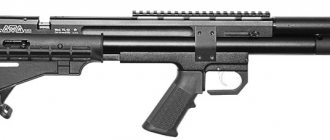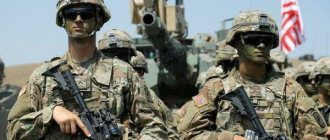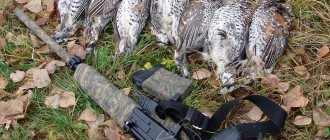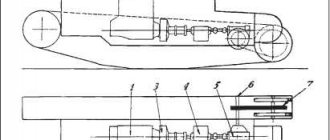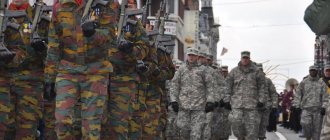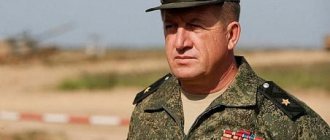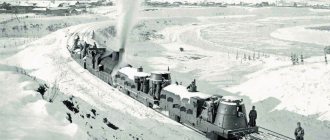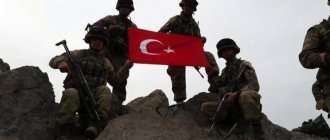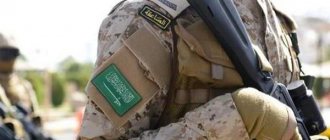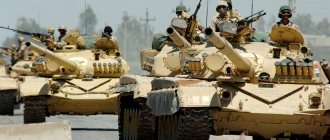No matter how civilized a society is, it will always strive to conquer the weak and gain more power. Violence has always been a significant part of human life. A clear indicator of this fact is nothing more than wars, of which there are countless in history. The use of military force occurred for various reasons: it could be a territorial dispute, unfavorable foreign policy, the presence of resources that others do not have, etc. As we understand it, the army of one or another power plays a major role in the process of state confrontations. In many countries this sector of activity has a long history. This determines the specifics of the formation and work of certain units. An excellent example in this case is the Swedish army. At one time it was one of the strongest in Europe. Today, the Swedish army is a professional structure that uses the latest developments in the field of weapons and equipment in its activities. At the same time, the Swedish army has many specific aspects in terms of professional activities.
Swedish Armed Forces: features
The military sector of most states has a uniform structure. Differences exist only in some divisions. Otherwise, the armed forces of any country consist of land, naval and air forces. In Sweden, the army is presented in the same classic “triangular” form. The main tasks of the armed forces of this country are to protect its territory and independence, as well as the rights and freedoms of its citizens. Thus, if you do not take into account the minor features of the internal structure, in essence this structure has nothing different, for example, from the armed forces of Russia, Great Britain, France, etc.
Recommendations
- "Historia: Det svenska försvaret". Säkerhetspolitik.se
. Retrieved March 30, 2022. - Nilsson, Christopher (2 March 2022). “Värnplikten har återinförts i Sverige.” Aftonbladet. Retrieved March 30, 2022.
- Sondsson, Eva (26 January 2011). "Ofolkligt försvar". Sundsvalls Tidning
(in Swedish). Archived from the original on January 3, 2022. Retrieved December 21, 2016. - Wallberg, Peter (10 January 2013). "Politician before the attack: Vill ha mer än en veckas skydd." Sydsvenskan
(in Swedish). Archived from the original on January 3, 2022. Retrieved December 21, 2016. - "Försvarsmaktens delårsrapport 2011" (PDF) (in Swedish). Swedish Armed Forces. 2011-08-12. Archived from the original (PDF) on April 2, 2012. Retrieved August 27, 2011.
- Sjogren, Ann-Lee (14 April 2016). "Krigsförbandschefer samlade" (in Swedish). Swedish Armed Forces. Archived from the original June 12, 2022. Retrieved December 4, 2022.
- "Rikshemvärnschefens brev till hemvärnspersonalen, December 2009" (PDF) (Press release) (in Swedish). Militia. December 2009. Archived (PDF) from the original July 26, 2011. Retrieved March 23, 2010.
- “Sweden brings back military service amid Baltic tensions.” BBC News. March 2, 2022. Archived from the original March 7, 2022. Retrieved March 13, 2022.
Interesting facts about the Swedish Armed Forces
Despite the completely standard nature of the armed forces of the Swedish state, they have many specific aspects. For example, until 2010, troops were recruited entirely through compulsory conscription. But, starting from the mentioned time mark, the call is completely canceled. This led to a large shortage of personnel in all branches of the military. Many experts argue that this problem has not been completely solved to this day.
As for the training of military personnel for the armed forces, it is carried out at the Karlberg Military Academy. This institution of higher education is located in a building that was once a royal residence. About three hundred young officers graduate from the Karlberg Academy every year. It should also be noted that Sweden is an active participant in peacekeeping activities around the world. State representatives work within the framework of many UN and OSCE missions.
"When the war starts"
As for “I wouldn’t like to point out a potential enemy,” that’s quite funny. Since the same Hulkvist draws a scenario for an attack on Sweden: “For example, to take control of the island of Gotland. If someone installs long-range missiles there, they will have a completely different range of influence on the Baltic countries, the Åland Islands, Finland and mainland Sweden. This results in completely different control over the Baltic Sea... From the south of Sweden you can control the exits to the Baltic Sea, and from Lapland you can control the transport routes of the Atlantic Ocean.”
At the beginning of January 2022, the Swedish Armed Forces released a series of videos on their YouTube channel under the telling title “When the war starts.” Each of the five parts received its own title: “The Uncertain Future”, “The Gray Zone”, “The Battlefield of the Future”, “The Defense of All” and “What is Worth Defending”.
The main enemy is almost never named directly in the videos, but the narrative is structured in such a way that you would have to be a very naive person not to guess who the Swedish strategists are hinting at. For example, viewers are told that the new conflict may have a so-called hybrid nature with the aggressor’s intervention in the work of energy systems, financial structures, and government bodies. As you know, Russian hackers have been repeatedly accused of this in the West recently.
Speaking about direct military clashes, the authors of the videos pay special attention to possible clashes in urban areas with the use of reconnaissance and sabotage groups.
According to representatives of the Swedish Ministry of Defense, these videos were created based on real military scenarios practiced by the Armed Forces. The purpose of the stories is said to be “better awareness” of citizens about the threats facing the country.
Two steps to greatness. How is the Northern War different from the Seven Years' War? More details
Army Features
There are many interesting points that characterize the Swedish ground forces.
- The state army is the main military bloc, which makes up about 70% of the total number of armed forces.
- Ground forces exist to prevent the occupation of a state during times of war.
- The army has a royal guard unit.
- The Swedish Army is subordinate to the Ministry of Defense.
- Operational command (in wartime) is exercised by the commander in chief. In the process of daily activities, the army is coordinated by the headquarters of the ground forces.
History of army formation
The Kingdom of Sweden is a fairly ancient state. The foundations of its statehood were laid in bloody wars. The history of the Swedish army is filled with many victories and defeats. The dawn of the country's military sector occurred in the 17th century. By this time, the Swedish army was already one of the most formidable in all of Europe. It showed its effectiveness in the Thirty Years' War, in which the kingdom gained significant territorial gains and dominance in the Baltic Sea. The army at that time was recruited through taxes collected from landowners. But, despite its “invincibility,” the army suffers a crushing defeat from Russian troops near Poltava. Today, historians explain this fact by the incorrectly chosen strategy of the Swedish commanders. It is impossible to understand in any other way how Peter the Great’s small army, in comparison with the Swedish one, was able to win such a loud victory throughout Europe.
The next bright historical stage is the Second World War. The difficult political situation in Europe forced the Swedish government to strengthen its military sector. This led to the fact that in 1945 this state was ready to confront not only Germany and its allies, but also the Soviet Union.
Land for soldiers
Having completed another war with the Danes in 1679, Charles XI set about reorganizing the army. Firstly, it was decided to leave garrisons of mercenaries in the Baltic fortresses, while the strategic reserve, consisting of Swedish-Finnish troops, was to arrive from the metropolis as needed. In addition, thanks to the “reductions”, the crown received at its disposal large areas of land that could be used for the needs of the army.
At the Riksdag of 1682, a decisive battle took place between the king and the nobility, and the disunited and weakened nobles were defeated. From now on, estates could not influence the recruitment of troops and the size of the army.
Instead of conscription, the indelta system was introduced - a territorial-militia principle of recruiting troops based on the principle of settlements.
Now peasants living on crown lands were freed from the threat of conscription in exchange for paying the costs of maintaining professional reservists. They also paid the soldier an annual salary in cash or in kind.
Each soldier received housing, food, clothing and about 135 copper dalers per year from the farmer. If a peasant could not or did not want to accommodate a reservist in his home, he was obliged to build a separate housing for him at his own expense, as well as provide him with agricultural equipment so that he could care for livestock and cultivate the land. When he went to war or on maneuvers, the peasant had to cultivate the soldier's land in his absence so that the soldier's wife and children had a means of subsistence. Company exercises were held once a month, since a company of 150 soldiers typically corresponded geographically to a county. Regimental exercises were held once a year for 15 days.
The indelta also extended to the cavalry, but the peasant who supported the rider was completely exempt from taxes and, in addition, in peacetime the rider served as a farm laborer.
But when the soldier was at home, the peasant, in turn, had the right to hire him to work for a wage equivalent to the wages of a day laborer. In the event of the death of a soldier, his wife and children had to vacate the house and land within three months in favor of a new reservist under pain of a fine. A contemporary wrote that in general the indelta hit the pockets of ordinary peasants hard, many of whom suffered huge losses and even went bankrupt.
Charles XI
The officers also received at their disposal yards that could not be alienated or inherited; upon retiring, they returned them to the crown. On the other hand, upon receiving a promotion, the officer moved to a more “status” and rich estate, which naturally stimulated career enthusiasm. Officers' yards were usually located in the center of the settlements where the regiment was deployed, which made it easier to assemble if necessary.
Structure of the ground forces
The Swedish army, photos of which are presented in the article, includes units that differ in their combat missions and type of activity. Of course, the basis of the ground forces are formations of infantry, artillery and, of course, tank forces. However, there are some peculiarities. For example, artillery is divided into field and anti-aircraft, which is in some way a feature of the Swedish army. There is also an auxiliary sector within it. It is represented by engineering troops, as well as logistics and communications units. These units are responsible for the safety and performance of equipment, material support for military personnel, and the availability of uninterrupted and secure communications within the military apparatus. Thus, the Swedish army has a very competent and efficient structure that allows the entire sector of the armed forces to operate without any problems.
"Refusenik" in the Defense Department
An interesting point from Hultqvist’s biography - the current Swedish Minister of Defense, being called up for military service in 1977, was dismissed after 57 days, as he took the opportunity to register as a “conscientious objector”. When Swedish journalists dug up this episode, the minister simply stated that he would not comment on this topic.
In an interview with Dagens Nyheter in 2022, Hultqvist said: “I do not suffer from any Russophobia or any other kind of fear of Russia. But realism and freedom from wishful thinking is something completely different!”
The minister’s activities are determined by the so-called “Hultquist Doctrine,” aimed at increasing defense spending and closer cooperation with the United States and NATO, but without joining the North Atlantic Alliance.
Hultqvist's assumption of office in 2014 coincided with a search in Swedish waters for a Russian submarine that allegedly appeared there. The Swedish media came out with headlines like “Largest operation since the Cold War.” Sources in the Swedish defense department reported that the military managed to intercept a signal for help, allegedly sent from Kanholm Bay towards Kaliningrad. The second signal was intercepted a day later. Both messages were in Russian.
Russians are coming. Are the populations in Sweden and Norway being prepared for a Russian invasion? More details
Military ranks of the Swedish Army
Contrary to many European trends, the armed forces of the state described in the article have a small gradation of ranks. The sergeant and enlisted personnel in its structure contains only six main ranks, namely:
- private;
- corporal and corporal;
- sergeant and senior sergeant;
- Warrant Officer 2nd Class.
In Sweden, the general officer corps has a more extensive classification. It consists of four main sectors. The first is represented by the cadets. They are candidates for future officer positions. The next sector is junior officers. These include warrant officers, lieutenants and captains. Senior officers are represented by majors, lieutenant colonels, colonels and colonels of the first level. As for the highest command level of the army, it is represented by the following four ranks:
- Brigadier General;
- major general and lieutenant general;
- Colonel General.
Thus, the gradation of Swedish titles, as we see, is quite simple and concise. This largely eliminates confusion in the process of activity of the entire formation.
Equipment and technology
The Swedish Army uniform and other equipment consist of the most necessary items in combat conditions. The main field suit is the M-90 military kit. It is made in green color and consists of a shirt, trousers, cap, thermal underwear, warm jacket, etc. The equipment of the Swedish army includes special individual bags for dressing, flasks with a volume of 0.7 liters, various household items, such as a twin spoon and fork . As for weapons, the main equipment of the ground forces are rifles, carbines, machine guns and machine guns. Today, representatives of the Swedish army use the following copies:
- rifle 90C;
- machine gun 58B;
- machine gun 88;
- automatic carbine 5C/D.
It should be noted that most of the equipment in service with Sweden is the product of a national manufacturer. In other words, the country is fighting with its own vehicles. The artillery sector is represented by the Swedish Archer self-propelled howitzer, as well as a 120-mm mortar. The tank troops are equipped with both national and foreign equipment, namely German and Finnish. The main tanks are the Leopard 2S and Leopard 2A4. In addition to them, Sweden has the BMW CV9040 and Pbv 401A in service.
In the fight against tanks, the Swedish military is helped by special AT4 grenade launchers and Rb 55, 56 anti-tank guided missiles.
Royal guard
The fact that Sweden is a monarchy determines some features of the structure of the armed forces. The Royal Guard plays a fairly significant role in the military sector.
These are special formations that are part of a structure such as the Swedish Army. The Life Guards regiment was formed back in the 16th century. The main task of the unit is to protect the Stockholm royal residence. The structure of the regiment contains infantry, cavalry and support units. Personnel formation of the Life Guards is carried out at the expense of military personnel of other branches of the military.
The guards are one of the calling cards of Sweden. Every year, a large number of tourists visit Stockholm in the hope of seeing the ceremonial changing of the guard.
Active regiments[edit]
Swedish soldiers during an exercise.
Swedish Army regiments are tasked with training conscripts and home guard soldiers. In addition, each regiment can mobilize operational battalions during a crisis or war to organize the army's rapid response. Currently active regiments and their main peacetime subordinate units:
- Life Guards
(LG), in Stockholm Stockholm command headquarters - International Armed Forces Center (Svedint)
- Armed Forces Canine Training Unit (FHTE)
- Military Music Center of the Armed Forces (FöMus)
- Dalregementsgruppen (DRG), trains and supports the militia in the Dalarna district. Dalarna Battalion (17. hvbat), in Falun
- Gävleborg Battalion (18. hvbat), in Gävle
- Attundaland Battalion (23. hvbat), in Kungsaengen
(Ing 2), in Eksjö
- Engineer battalion, trains troops of the 21st and 22nd engineer battalions.
(K 3), in Carlsborg
- Training companies train troops of the 31st Light and 32nd Reconnaissance Battalions.
(P 4), in Skövde
- Training unit (TFE), trains troops of the 41st and 42nd mechanized battalions, 18th combat group, 1st heavy transport company and 2nd reconnaissance company.
- Bohuslens Battalion (40. hvbat), in Skredsvik
(Level 6), in Halmstad
- Air Defense Battalion, trains troops of the 61st and 62nd Air Defense Battalions.
(P 7), in Revinghead
- Skånska Gruppen (SSK), trains and supports the militia in Skåne County Scania Dragoon Battalion (48. hvbat), in Helsingborg
(A 9), in Boden
- Artillery Battalion, trains troops of the 91st and 92nd Artillery Battalions.
(I 19), in Boden
- The Norrbotten Armored Battalion (Pbat/I 19), in Boden, trains troops from the 191st and 192nd Mechanized Battalions and the 3rd Brigade's reconnaissance company.
- North Bothnia Battalion (12. hvbat), in Boden
- West Bothnia Battalion (13. hvbat), in Umeå
- Field Jaeger Battalion (14. hvbat), in Östersund
- Angermanland Battalion (15. hvbat), in Härnösand
